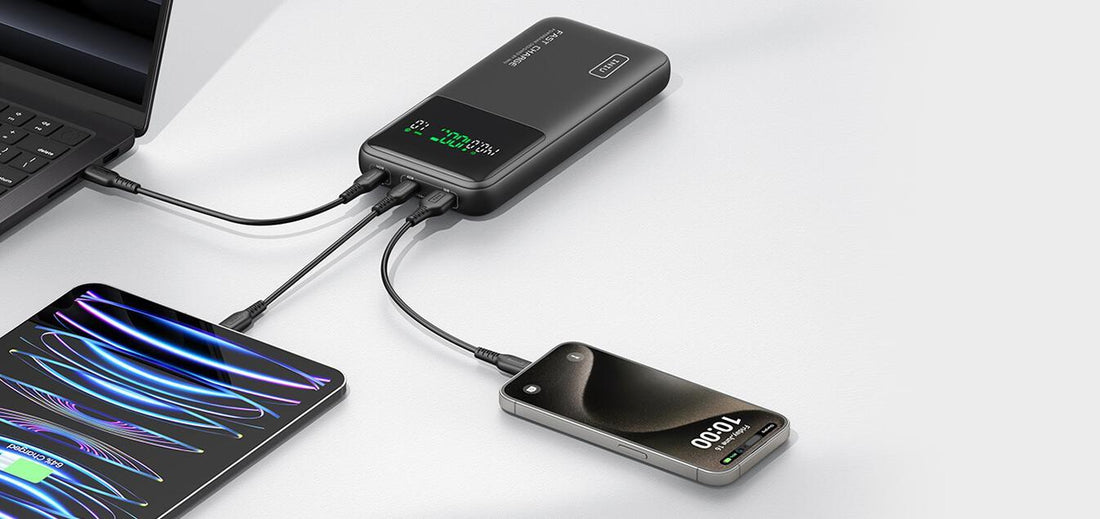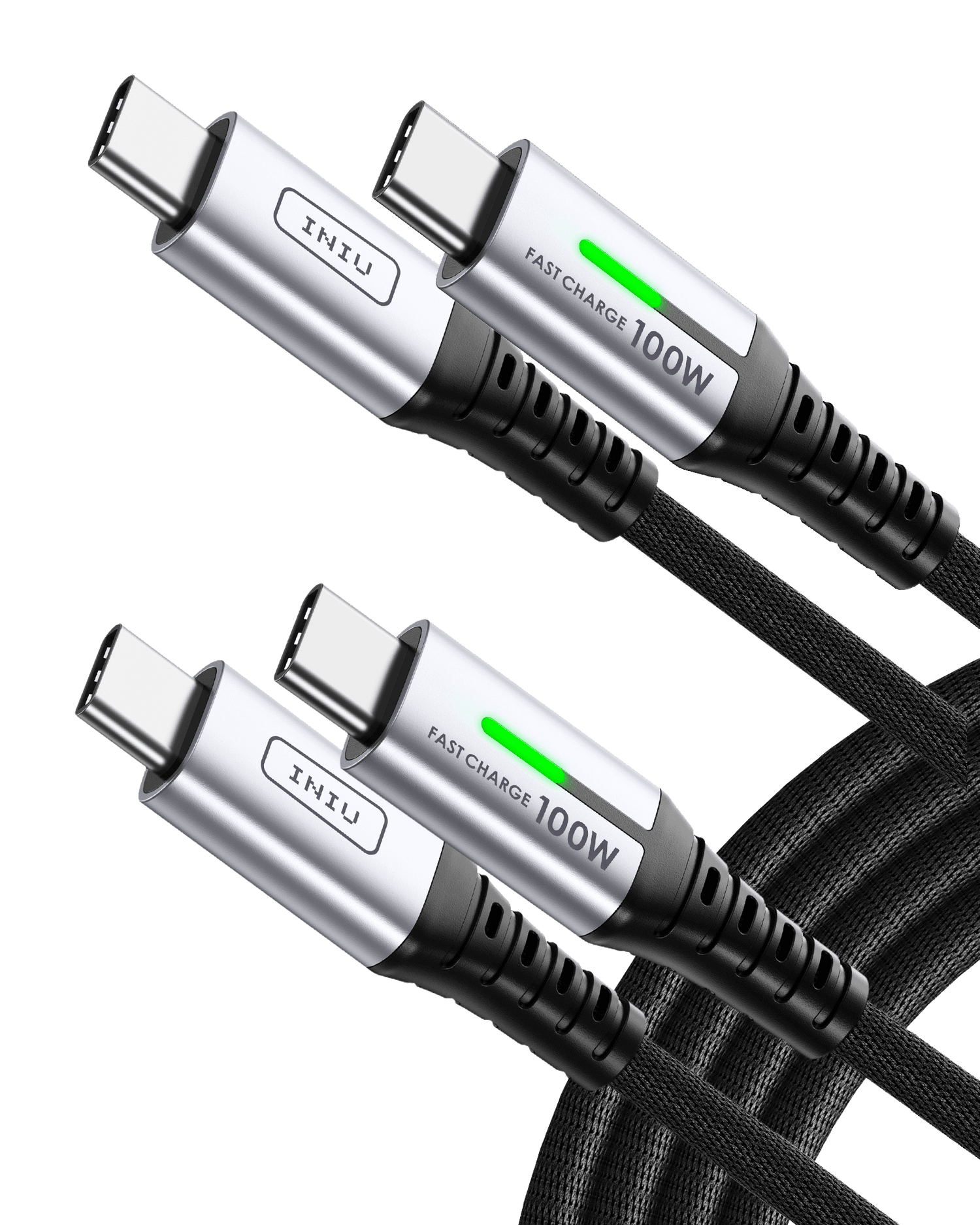
How to Use a Power Bank Safely
Portable power banks are very helpful in daily life. People use them to charge phones, tablets, and other devices when they cannot find a wall outlet. These small chargers are easy to carry and can charge devices more than once. But they also come with safety risks. If used the wrong way, they may overheat, catch fire, or damage your device.
What Is a Portable Power Bank?
A portable power bank is a small battery that stores energy. It works like a backup charger. When your phone runs out of battery, you can use the power bank charger to recharge it. Most power banks use lithium-ion or lithium-polymer batteries.
You may have once wondered about the mAh meaning.For it often shows up on the box. It means "milliamp hours." This number tells how much power the battery can hold. A higher mAh number means the power bank can charge your device more times. For example, a 10,000 mAh power bank like the INIU P50-E1 can usually charge a phone about two to three times.
Why Safety Is Important
Portable mobile power banks are very useful, but they are not toys. They carry strong energy inside. If not handled with care, they can:
- Get too hot
- Damage your phone or tablet
- Catch fire
- Leak harmful fluid
- Stop working suddenly
Knowing how to charge and use a power bank the right way can stop these problems before they happen.
Where to Store a Power Bank
Heat is the biggest danger. Never leave a portable power bank in a hot place. That often includes:
- Inside a car during the day
- On a bed or couch
- Near heaters or in direct sunlight
Also, keep the power bank dry. For instance, do not use it in the bathroom or near water. Because wet power banks may short-circuit.
Best places to store your power bank:
- In a bag
- In a drawer
- On a table away from sunlight
Keep it in a place out of your children's reach. Proper storage is a key part of power bank maintenance.
How to Charge a Power Bank
Charging the power bank safely is very important. Always follow these tips:
- Use the right charger. Check what kind of cable and plug your power bank needs. Do not mix random chargers.
- Do not charge it all night. Overcharging can heat up the battery and cause problems.
- Stop if it gets hot. If the power bank becomes very warm while charging, unplug it and let it cool down.
- Charge it on a hard surface. Do not charge it on a bed, blanket, or pillow. Soft materials trap heat.
How to Charge Your Phone with a Power Bank
Charging your phone is simple, but there are still rules:
- Plug the correct cable into the power bank charger port.
- Connect the other end to your phone.
- Watch your phone. If it charges too fast or gets too warm, unplug it.
- Do not move the cable too much. It can damage the ports inside.
If the power bank has more than one port, make sure you use the right one. Some ports charge faster than others. Read the symbols next to the ports. They usually show which is for fast charging and which is for normal charging.
What Not to Do
Here are things you must never do with a portable mobile power bank:
- Do not drop it.
- Do not sit or step on it.
- Do not dismantle it.
- Do not use it if it is swollen, cracked, or smells strange.
- Do not place metal items like keys, coins, or paper clips near the ports. These can cause short circuits.
- Do not try to fix it yourself if it breaks.
If your power bank shows any signs of damage, stop using it right away.
Signs of Trouble
Sometimes, a power bank starts to fail. Here are the warning signs:
- It gets hot often
- It smells bad
- It leaks fluid
- The case looks swollen
- It makes odd sounds
If you see any of these, stop using the power bank. Place it on a safe surface and wait for it to cool down. Then, contact a service center or recycle it at a battery collection point.
Final Safety Checklist
Before each use, ask yourself:
- Is the power bank hot, swollen, or cracked?
- Are the ports clean and dry?
- Am I using the correct cable?
- Am I charging it in a cool, dry place?
- Did I stop charging after it reached 100%?
If you answer yes to all, you are using your portable power bank safely.
The Final Word on Power Bank Safety
Portable mobile power banks are great for busy days, travel, or emergencies. But they are strong devices that carry real risk.
- Use them carefully.
- Charge them the right way.
- Store them in safe places.
- Never ignore signs of damage.
- And always follow the basic rules.
A good power bank can last for years. A bad one can cause damage in seconds. Simple habits help keep you and your devices safe.
FAQs About Safe Power Bank Use
Q1. Can I Take a Power Bank on a Plane?
A: Yes, you can fly with a power bank, but only in your carry-on bag. Do not put it in checked luggage.
Q2. What Happens If I Use the Wrong Cable?
A: Wrong cables can slow down charging or overheat the battery. Always use the cable that came with the power bank. If you lose it, buy one that matches the correct port and power needs.
Q3. Can a Power Bank Harm My Phone?
A: No, a good-quality power bank won’t harm your phone if used correctly. Just make sure the voltage and current match your phone’s requirements, and avoid using low-quality or unverified products.



